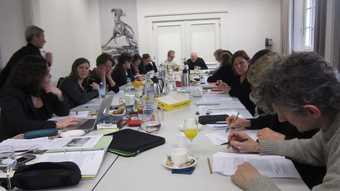Involving artists, museum professionals and colleagues across the academy (art historians, sociologists, cultural theorists, theatre and performance scholars and educationalists), the project will examine the role of actions and gestures in art and learning practices, seen from both historical and theoretical perspectives. The research project will consider the work of art in an expanded sense – as an entity whose boundaries extend beyond the material object to encompass the broader situation in which it was made, was presented and has meaning. The project will also pay attention to how the history of performance and the concept of the performative challenge art historical narratives and the construction of meanings within the art museum (seen here as a mediating structure that has helped both articulate and partially repress the history of performance art). Examples of contemporary and historical practices – ranging from live artworks to activist art and relational pedagogy – will be researched and positioned in relation to the art museum’s mission to collect artworks and provide a site for educational exploration.
Art practices with a basis in performance play an increasingly prominent role within the contemporary art museum, and the notion of the performative with its emphasis on the ‘citational’ power of utterance (first introduced by J. L. Austin in How to Do Things with Words in 1955) has come to inflect our understanding of artistic decision-making and thus of the language of contemporary art. The term performative, however, is much contested, as evidenced by Judith Butler’s exploration of performative gender, where a vocabulary of contructed acts form a performative language, and by Dorothea Von Hantelmann’s investigation of how an artwork ‘acts’ within the ritualistic space of the museum. As such, is there a need to look more closely at how the relationships and meanings of artworks are described and accounted for within the overall narratives constituted by the museum?
Do art practices foregrounding performance and the performative have lessons for how the art museum today should explore the role of sociality in art, and thus how it should think about programming, pedagogy and collection strategy? Bringing together contemporary curating, collections policy, conservation and learning programming, this project seeks to interrogate strands of art and learning activity from a performance-oriented perspective in order to contribute to understanding of the role and functioning of the modern art museum.
Beginning in autumn 2011, the project will examine these issues in a series of four seminars involving participants from a range of relevant disciplines, leading to a major symposium in the autumn of 2012. Research conducted under the auspices of two AHRC Collaborative Doctoral Awards (one with University College London examining the role of ‘performance, actions and events’ in the contemporary art museum and the other with Goldsmiths College, London, exploring the role of artists within participatory learning programmes at Tate since 1970) will be integral to this first phase of the initiative.

